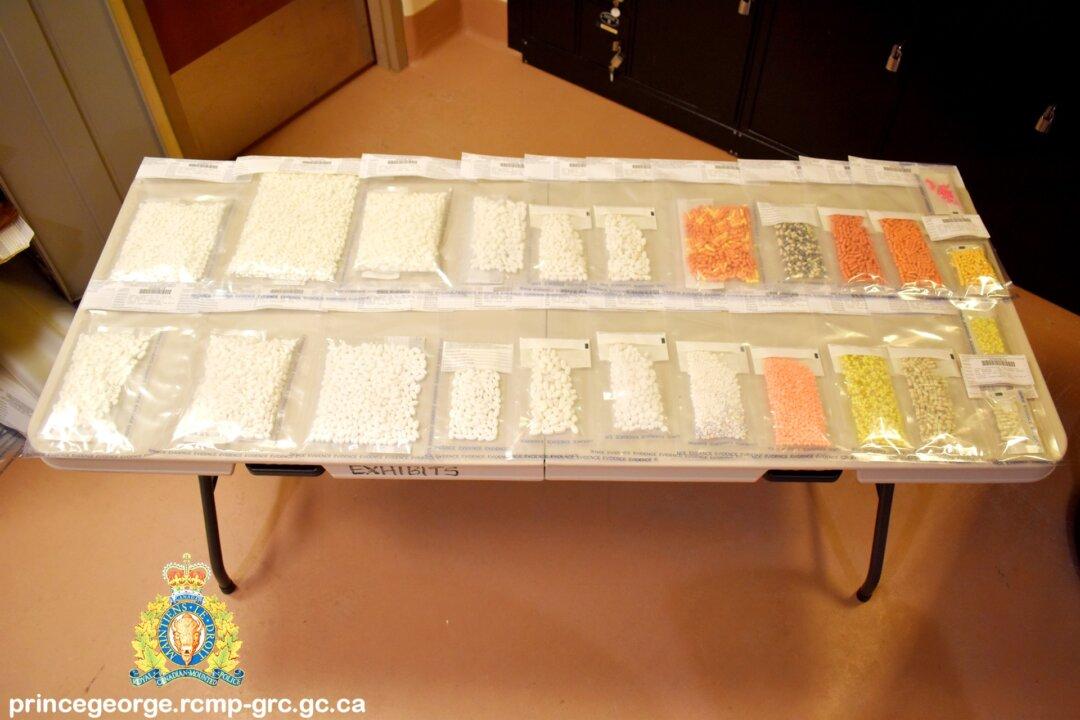The RCMP have seized more than 10,000 prescription pills—many of them government-funded “safer supply” pills—as part of recent drug busts in Prince George, B.C.
Mounties also seized 3,500 pills, with evidence they were diverted from safer supply programs, during a Vancouver Island bust last month. In both cases, safer supply pills were found alongside illicit drugs such as fentanyl, cocaine, and methamphetamine in both busts.





